When two sines, with similar, but not equal frequencies are mixed together, beating effect occures. But when they are played by separated channels (f. e. in stereo), mixing happens in your head, resulting in binaural beat. This device lets you make this kind of beats.
Please welcome, one and only (I couldn’t find any more hardware analog solutions), the Binaural Beat Generator!
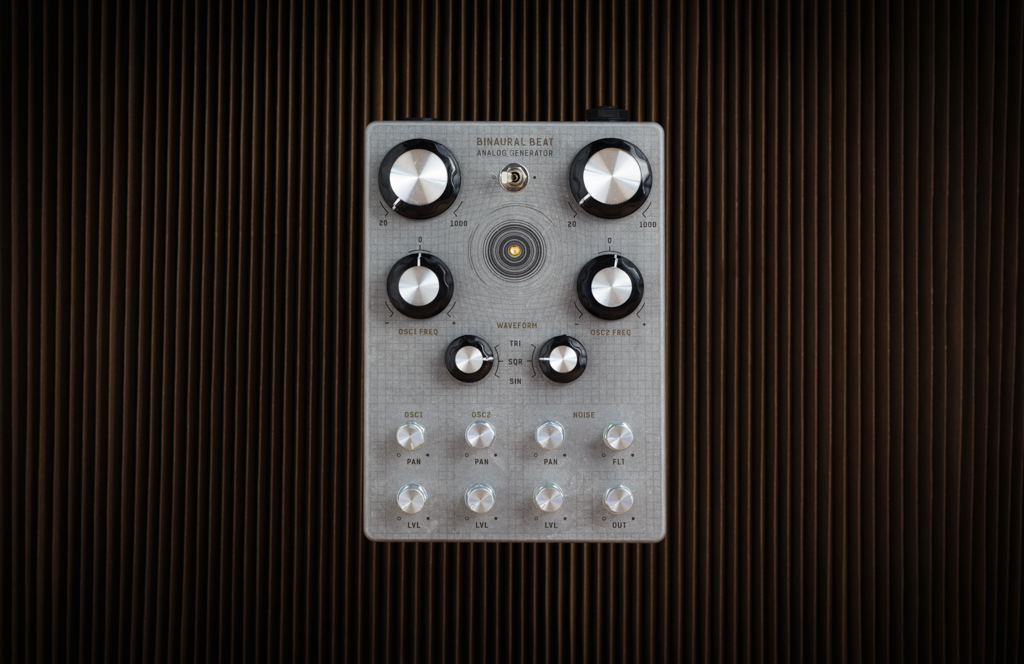
The idea is simple: two sine sources and mixer. For more possibilities, I have added filtered noise generator (if somebody wanted to make some relaxation landscapes with it). Lets look how it works:
- Device contains following sections:
2x generator – sine, triangle, square waveforms, frequency range from 20 to 1000 Hz (based on ICL8038; later I have added LP filter for sine waveform, to make it cleaner), - filtered white noise generator (noise generator is transistor based, filter is 2nd order Sallen-Key low pass),
- mixer – for each channel – pan and level, global output level.
Signal path is 100% analog. Device is powered from external 12 VAC power adapter. I’m very proud of the LED in the middle, gold plated, manufactured around 1970. At 20 mA it barely glows.
Now the boring part: developing and building process.
As always, everything starts with idea, then prototype. I made 2 ICL8038 generators to test the waveform quality and stability. Cardboard box is perfect for prototyping.
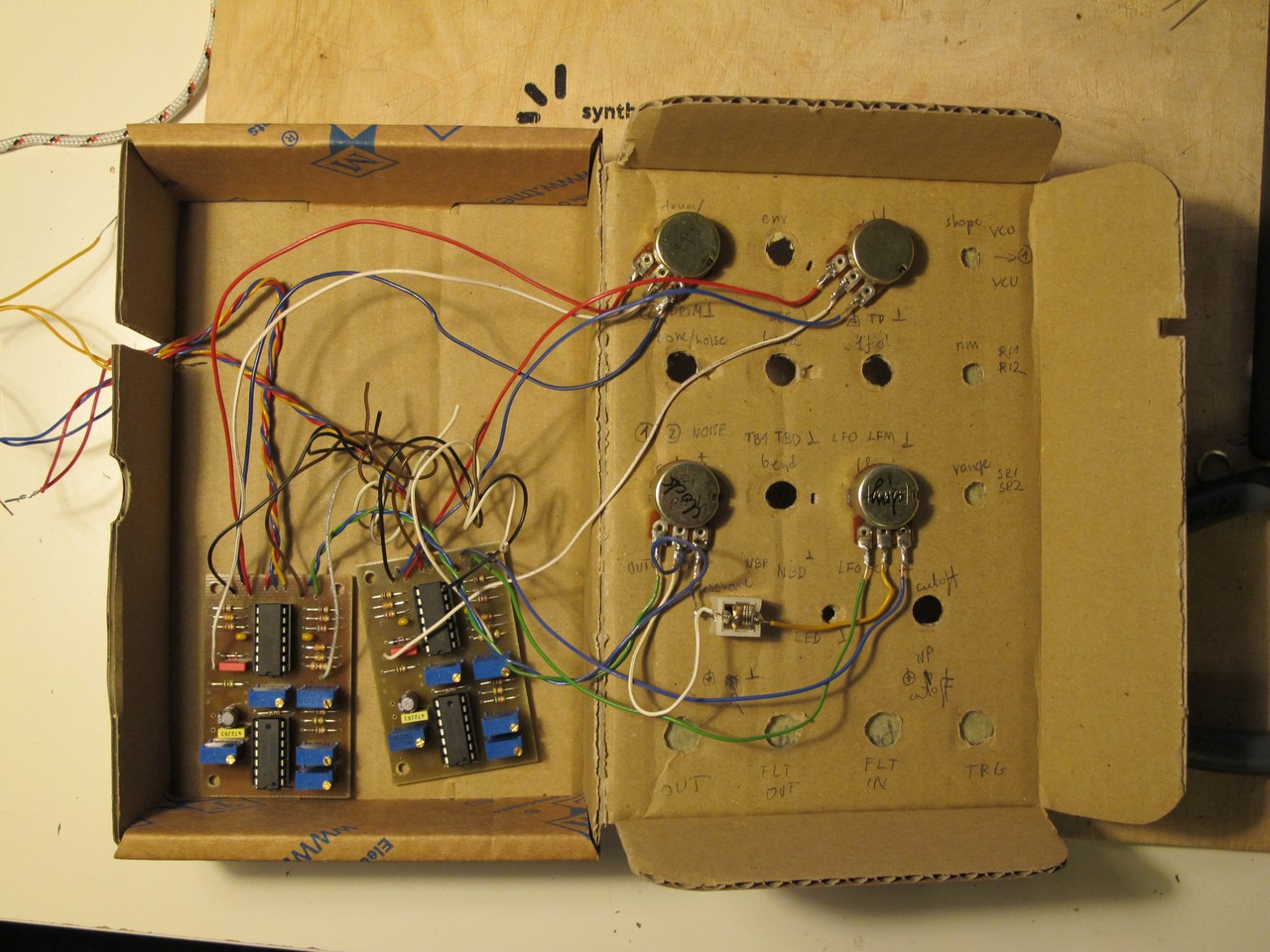
Tests of the interface – distance between knobs have to be set to let user twist and wiggle them without problems. I’m quite shure 90% of synth manufacturers skip this step. Arrows with numbers say how many milimeters up or down knob have to be moved.
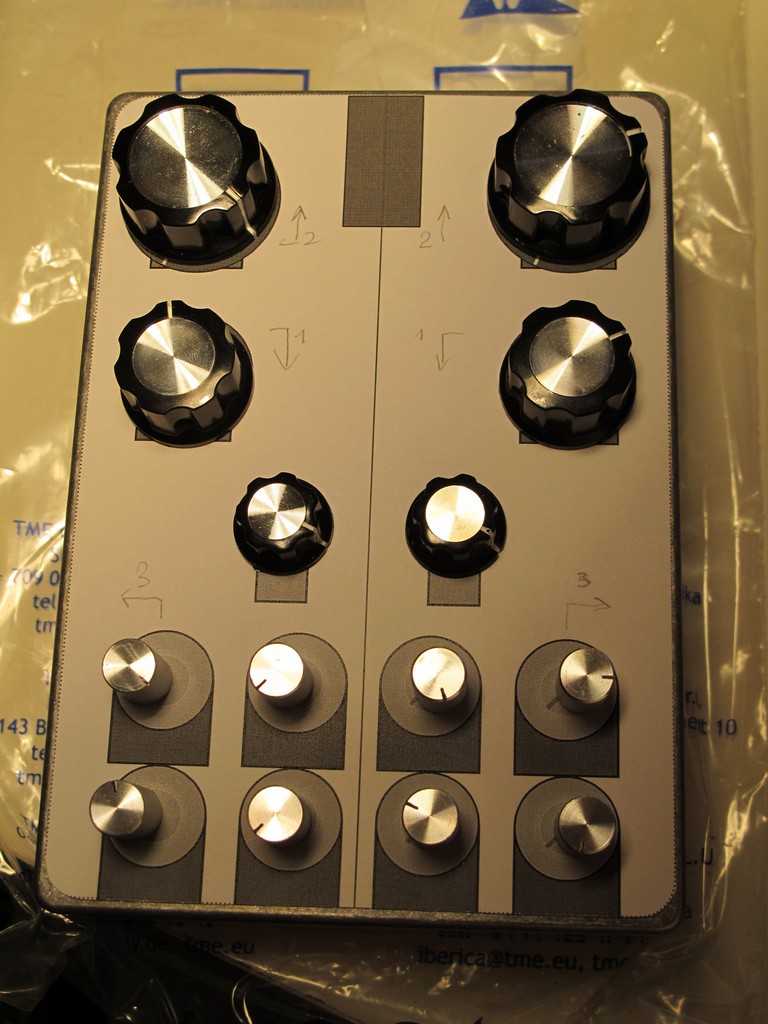
Knobs are placed, now the time for some graphic design. My girlfriend helped me with it. I now only Paint :/ Front panel artwork is printed, then fixed with adhesive tape. It will be used later to make small holes with pointer and hammer, for easier drilling.
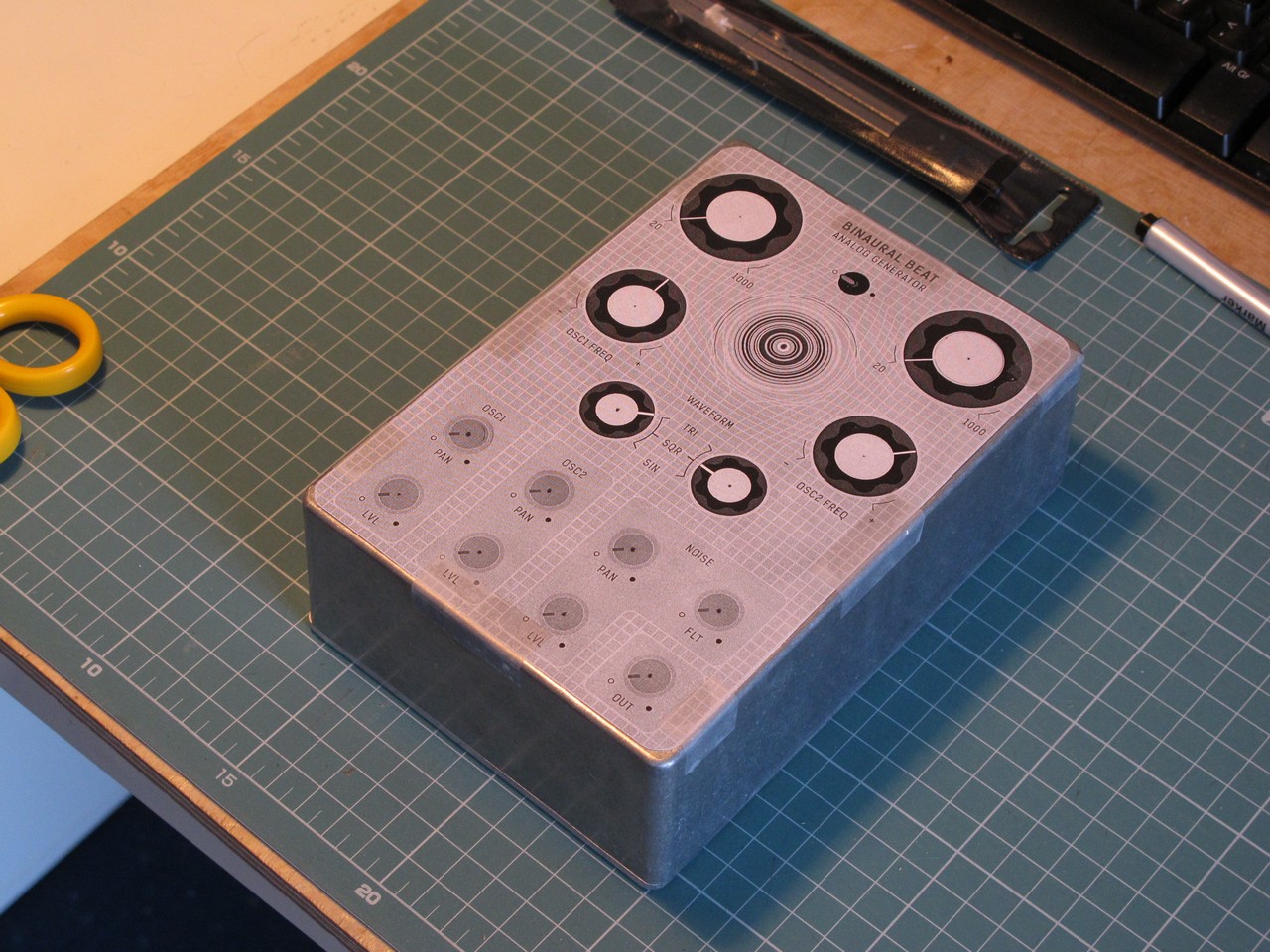
Artwork is printed on water decal, then transferred to drilled enclosure. I didn’t want to paint whole device – the aluminum is grinded only a little bit, to add more raw look.
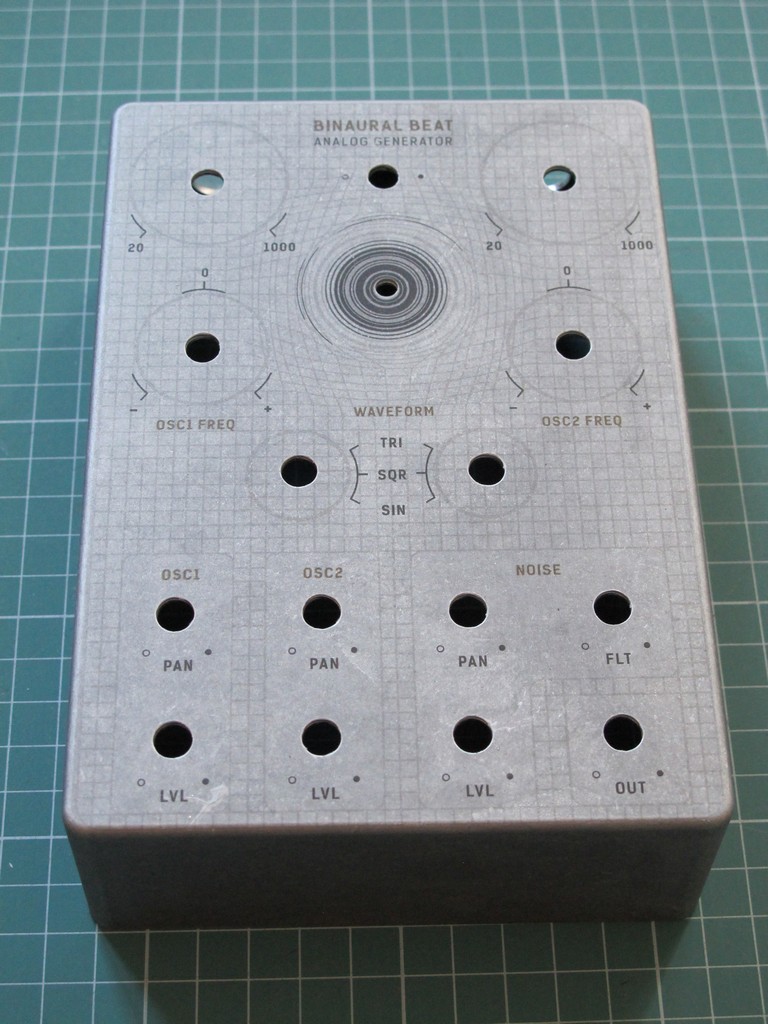
Pots, Jacks and switches are on its place. When designing a front panel, it is important to think what is happening under it. You don’t want to find out, you have place pots too close to each other and they doesn’t fit, after you drilled the holes. I also always make some short notes on pots and near other components to simplify wiring process.
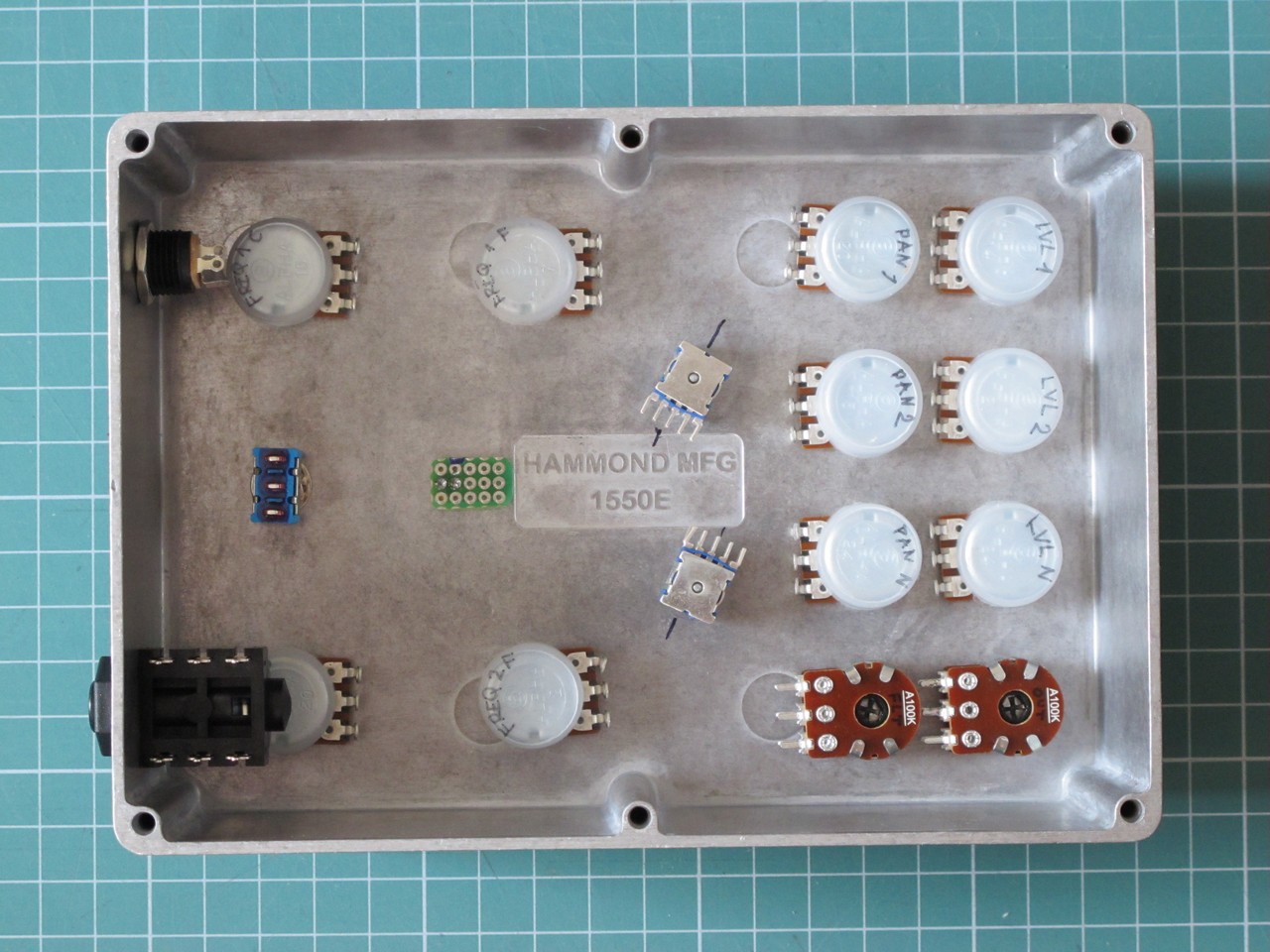
It’s tight inside. I thought the enclosure was a little bigger. I have splitted the device into 5 PCBs – two function generators (two in the middle), noise generator with filter (bottom left), mixer (bottom right) and power supply (top). This allows for some later upgrades.

The last thing is to close the lid and enjoy binaural beats.
Jack
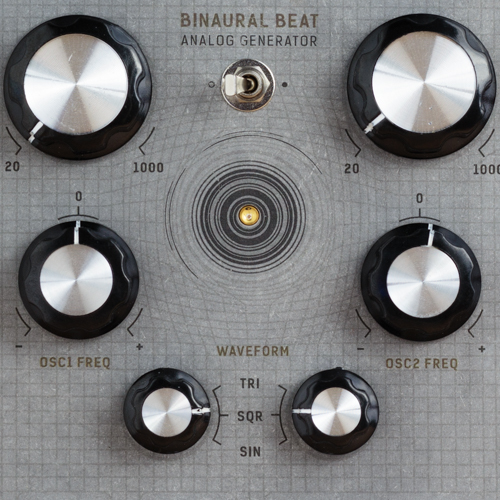
Ive been looking for something like this fo awhile do you have a kit for it?
No, but I am working on it. Cheers!
Hello, just came across this article and wondering if there are any updates on a kit? Such a cool project, thanks so much!
Hello, sorry, no updates :/
Hello good afternoon.
I watched your binaural beat maker video and would like to know if you have the product for sale, or the project of it.
Thank you very much in advance,
Did you are selling a kit o the schematic, i am interested for my class room, thank you for your time
alexis